Hello HAM Radio (USA) aspirants out there!! In this Article we have tried to cover All the basic information regarding HAM radio / Amateur radio which will be useful for all aspirants out there in the USA. The topics covered in this article are “At A Glance”.
In depth information about each topic will also be covered as separate blog posts in below mentioned categories as the time flows.
If you’re running short of time we have a comprehensive guide for beginners, you can visit: Ham Radio for Beginners All in 1 Guide
What is HAM Radio or Amateur Radio?
Ham radio or Amateur radio is a hobby that has been around for over 100 years. It is a form of radio communication that is used for the purpose of self-training, intercommunication, or emergency communication. Amateur radio operators are also known as “hams”.
Why it is called Amateur Radio?
The term “Amateur” means someone who does something in their spare time or as a pastime.
This term was first used in France in 1875 to describe those who studied science and technology as an avocation, outside of academia and professional life.
Why it is called HAM Radio?
The term “HAM” was used first in professional wired telephonegraphy during the 19th century to refer to amateur operators who were unable or unwilling to send Morse code. The term “HAM” was still used after the invention and proliferation of amateur wireless telegraphy. Ham amateurs were, at the time, considered nuisances among professional radio operators both land-based and sea-based. Then in other fields, such as engineering and medicine, the term “ham” was used sparingly.
But as the time passed, Amateur radio operators began to use the term “HAM” as a badge of pride. By the middle of the 20th century, it had lost its negative connotations. So “HAM” It is not an acronym but it is frequently misunderstood as a backronym with “HAM” in capital letters.
International Amateur radio or HAM radio Symbol
The figure in the right is the Internationally recognized symbol of Amateur radio or HAM radio.
As you can observe, it depicts an antenna filter consisting of antenna end, a coil and grounding.
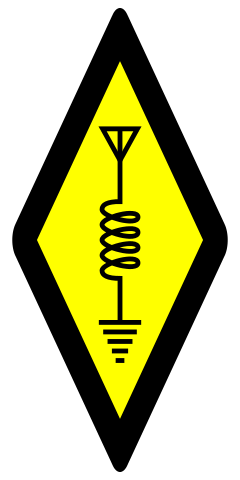
History of HAM radio
The origins of amateur radio can be traced back as far as the late 19th century. James Clerk Maxwell, an 1873 inventor of the electromagnetic field, presented his theory. Guglielmo Marconi transmitted radio signals across the Atlantic using a radio device with high power and large antennas in 1901. Congress passed the Radio Act of 1912 to reduce interference. Amateur radio operators were required to be licensed and limited to a single wavelength of 200 m. Hiram Percy Maxm founded the American Radio Relay League (ARRL) in 1914. Maxim discovered that long-distance messages could be transmitted more reliably if relay stations were established.
“Marconi”, the first Amateur radio operator
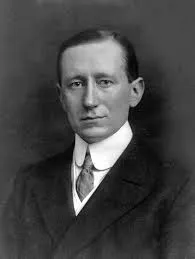
In 1901, Guglielmo Marconi invented the Radio to get on the Air with transatlantic communication, and hence he may well be called the very first HAM or Amateur radio operator of the world. Before succeeding in the experiment, he adapted Rudolf Hertz’s theory that radio waves existed and built a communication system back in 1890.
The era of long distance HAM radio communication
The era of long distance HAM radio communication began in 1920s.
The first transatlantic communication between amateurs from Connecticut and England took place in 1923. This opened up long-distance communications worldwide. This long-haul contact led to 1927-1928 international conference that established essential frequency bands and created call signs for each country. Hams used their initials to identify themselves on the air. At the end of 1920s, hams received bands ranging from 160 to 5 meters and additional bandwidth on UHF (400 MHz).
Regulations governing HAM radio
International Amateur radio regulations
International Telecommunication Union (ITU) is the most renowned United Nations agency for information and communications technology-related issues. The headquarters are at Geneva, Switzerland, the ITU has in its membership 193 Member States as well as hundreds of Sector Members and Associates.
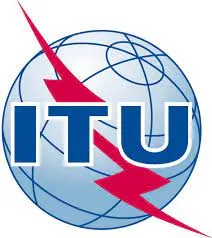
ITU is responsible for Regulation of Amateur radio or HAM radio worldwide. The allocation of frequency spectrum and CALL SIGN blocks for HAM radio to All the countries is done by the ITU.
Amateur radio regulations in the USA
The Federal Communications Commission (FCC) is the government body responsible for Regulating Amateur radio/ Ham radio licensing in the USA.
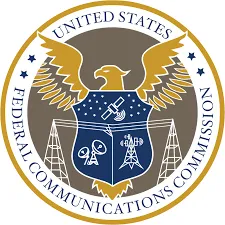
Licenses to operate amateur radio stations for personal use are given to anyone of any age who demonstrate a clear knowledge of the relevant FCC regulations as well as a thorough understanding about radio station operation and safety issues. As young as five years old have passed exams and have been granted licenses.
Part 97 of the FCC Rules covers all the Rules and Regulations regarding Amateur Radio Service in the USA.
Types of Amateur Radio Communication
Amateur radio operators or HAMs do two way communications through transceivers they’re equipped with. There are two types of communications that HAMs do.
- Voice communication also called Telephony
- Morse Code communication also called Telegraphy
Voice Communication or Radio Telephony
Voice communication is among the most well-known formats for radio amateur communication. It’s easy and extremely enjoyable talking to others and having direct personal contact through amateur radio.
Several options are available these days to make voice communication through Telephony listed below:
- Amplitude Modulation (AM)
- Frequency Modulation (FM)
- Single Sideband (SSB)
- Digital Voice Modes
Morse Code or Radio Telegraphy
Radio Telegraphy is a mode of Radio communication in which written, text or coded information is passed through Morse Code or digital modes.

Morse code is a form of communication that uses Morse code can be described as a type of code which uses a sequence of dots and dashes that symbolize the various letter of alphabets, numerals or procedural symbols. It is possible to communicate messages using Morse code by turning a light on and off in the proper manner to show those dots and dies.
With the advent of new technologies The Morse code is being replaced by technological advancement in many aspects in radio communications. However, the Morse code is still heard when listening to HF radio bands, and it is still widely in usage in the amateur radio and Ham radio circles. It is still in use commercially in various locations, but it’s not widely utilized.
Types of HAM radio licenses in USA
HAM radio or Amateur radio license is issued by the FCC in USA.
There are three (03) license classes in the USA for becoming a HAM radio operator.
- Technician class License
- General class License
- Amateur Extra class License
Technician class license
A Technician Class license can be the entry-level licence that is the most popular choice for amateur radio operators. To obtain the Technician license, you need to pass one exam that consists of 35 questions about radio regulations, theory and operating procedures. The license allows the ability to use all Amateur Radio frequencies above 30 megahertz, giving licensees to communicate locally , and most frequently in North America.
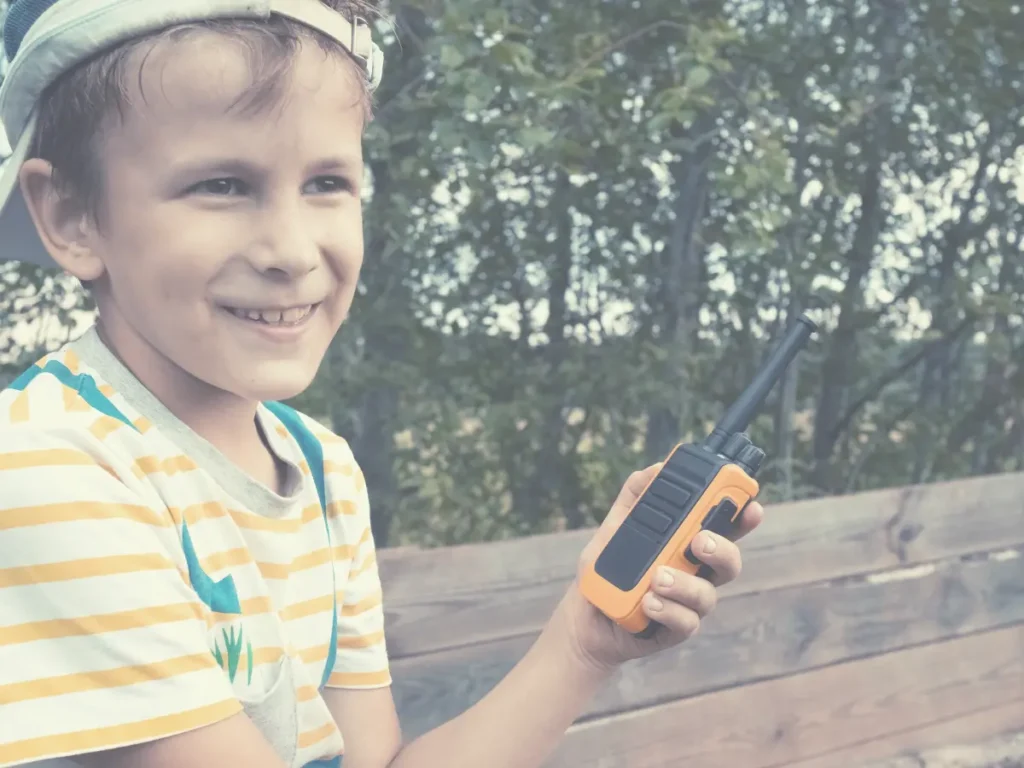
General class license
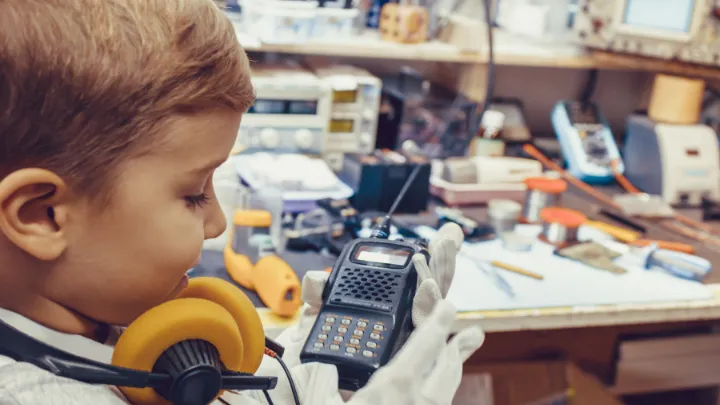
A General Class license provides the user certain operating privileges across every Amateur Radio bands and operating modes. The license allows you access to global communications. To obtain the General class license, it requires passing a 35-question exam. General class licensees must be able to pass the written test for Technicians.
Amateur Extra class license
This Amateur Extra class license conveys all the U.S. Amateur Radio operating rights on all frequencies and modes. It is more challenging; it involves passing a comprehensive exam of 50 questions. Extra class licensees must be able to pass all prior written exams for the license class.
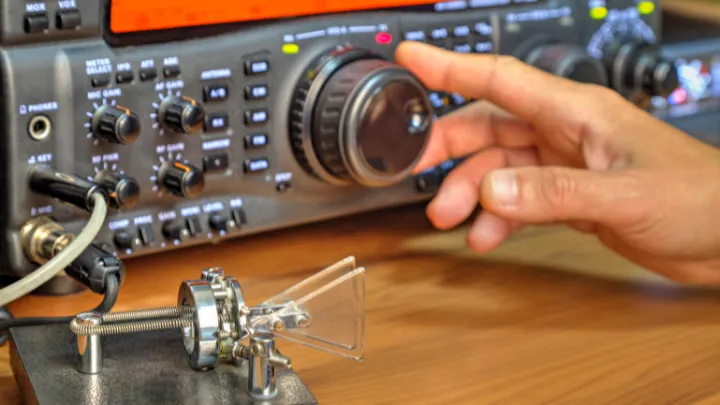
Radio Frequency Blocks in USA
In the US, the FCC creates radio frequencies to allow civilians to talk to each with each other and enjoy the radio frequencies that we all have. These blocks are called “Spectrum”. FCC sets aside and allocates the spectrum for various purposes. Different spectrums are referred to by different names as well as rules and regulations, each having its own advantages and disadvantages. To make it easier to understand spectrums or radio frequencies in the USA are described as follows.
- Amateur “Ham” radio
- Citizen’s Band (CB)
- Family Radio Service (FRS)
- General Mobile Radio Service (GMRS)
- Multi-Use Radio Service (MURS)
Amateur “Ham” radio
Frequency: 1.8 - 1300 MHz
“Amateur” or “HAM” radio is purely non-commercial and restricted to personal communications of technical in nature. One cannot use it commercially or to make money.
It is different from Citizen Band (CB) or “personal radio” being very powerful and broad. On the other hand CB is specifically meant for personal or family use for activities like tracking & hiking etc.
A Ham Radio base station may be emitting typically 1500 Watt power and hand held Ham radios comes with typically 5-8 Watt power emission.
Know more: Popular Ham radio frequencies of USA.
Citizen’s Band (CB)
Frequency: 26 - 27 MHz (HF), 11mtr band - 40 channels
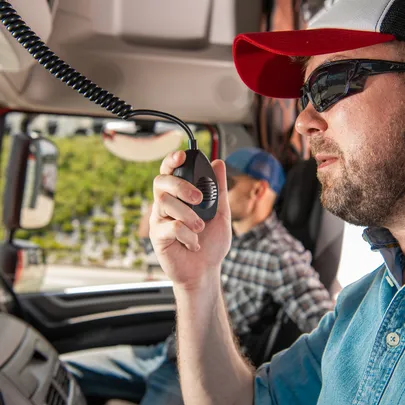
CB has a power limit of 4 Watts and you don’t need any license to operate a CB radio. It is used personally by families and some truckers and off-roading clubs. It relies on AM (Amplitude Modulation) techniology. The disadvantage of CB is power restrictions and interference from other channels. And as it operates in HF band, it will requires larger antenna.
Compare: Ham Radio v/s CB
Family Radio Service (FRS)
Frequency: 462 - 467 MHz (UHF), 22 channels
It was the FRS block was conceived through RadioShack in the RadioShack retailer in the early 1990s in order to let families quickly purchase and use walkie talkies that were more suitable in personal usage than CB however, they didn’t require a license. This led to the development of the standard “bubble pack” paired radios that you can find at gas stations as well as Walmart.
Read more: About Ham radio vs walkie talkie
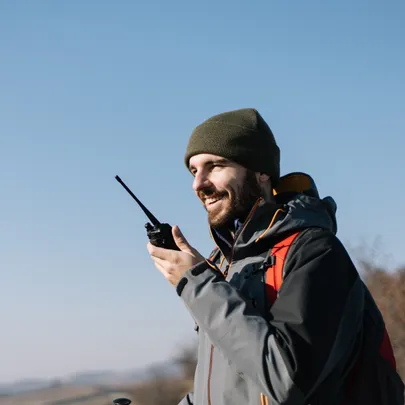
General Mobile Radio Service (GMRS)
Frequency: 462 - 467 MHz (UHF), 22 channels
GMRS is sort of the business equivalent to FRS. For instance, farmers and companies with employees spread across the same area could use GMRS.
It is still necessary to have an operating license for GMRS and costs about $75, but there’s no test required. GMRS can be operated with up 50 watts power, however most of the products have a power range of only 3-5 Watts.
GMRS can be the one radio apart from Ham radio which allows use of repeaters.
You may like to read: Ham radio vs GMRS… Which is better
Or you may like to explore: Best GMRS Radios for beginners
Multi-Use Radio Service (MURS)
Frequency: 151 - 154 MHz (VHF), T channels
MURS was developed in 2000. It’s not a huge hit and is generally not used as a tool for prepping. It is not required to have a license to operate MURS. The power limit is 2 power sources.
But, some of the latest products targeted at people who are preparing for the future use MURS as a background service such as the goTenna device that connects with your smartphone to send short text messages, but without using the mobile network. This device sends messages over MURS to nearby goTennas making a peer-to peer radio network.
How to become a HAM or Amateur Radio Operator in the USA
The basic steps towards your journey of becoming a HAM can be broadly classified in five steps:
- Preparing for HAM Radio Examination
- Getting your HAM Radio License
- Prepare your HAM Shack
- Learn Communication Standards
- Go on Air make that first call
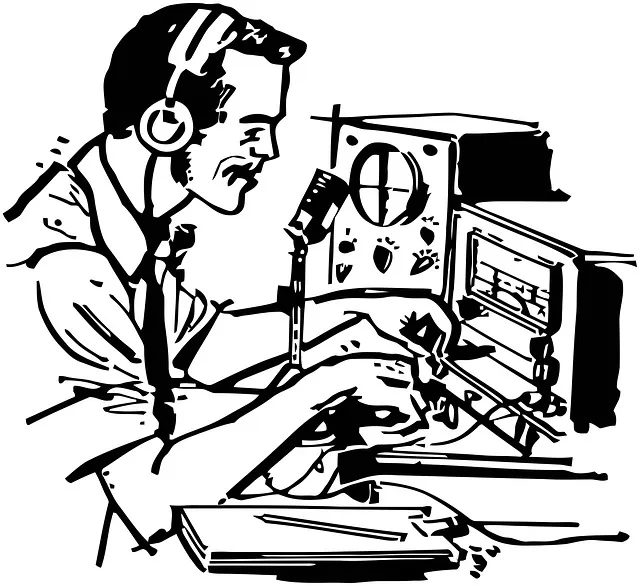
Preparing for HAM radio License Examination
Before beginning the preparation for the License examination make sure you are aware of all the Rules and Regulations of the Ham Radio examination and you are applying for the proper class of license.
You can always find Local HAMs in your area or Ham Radio Clubs nearby to get help in your exam preparations. You can also use sites like arrl.org where you can find an Amateur Radio license preparation class in your community or nearby.
You can take practice exams here offered by arrl.org or you can go for paid classes for preparation of ham radio license exam.
Click here if you are looking for paid classes.
9 Best Ham radio books handpicked for you.
Getting your HAM radio License
Getting your technician class license (Level 1)
The written examination consists of 35 Questions (Element 2).
Frequencies allotted: All VHF/UHF Amateur bands (> 30Mhz) & some limited HF bands.
This exam is a part of the FCC technician license and covers fundamental guidelines, operating practices, and electronic theory with particular attention paid to VHF as well as UHF. Morse code does not necessary to pass this exam. If you have the Technician Class license it gives you the full ham radio privileges up to 30 MHz. This includes the well-known 2-meter band. A lot of Technician licensees use small (2 meters) handheld radios to remain connected to other hams from their area. Technicians can utilize FM voice digital packet (computers) television single-sideband voice, and a variety of other exciting options. It is possible to establish international radio connections via satellites using very basic station equipment. Technician licensees have additional rights on specific frequency bands. Technicians can also use the 40, 80 as well as 15 meters bands with CW. They can also operate in the 10-meter band with digital, voice and CW modes.
Upgrading to General class license (Level 2)
The written examination consists of 35 Questions (Element 3)
Frequencies allotted: All VHF/UHF Amateur bands & covers most of HF band (10 to 160 metres)
General Class license is the second of three licenses. General Class license is the third of the US Amateur Radio licenses. For the upgrade process to General Class, you must have the Technician Class License (or have recently completed the Technician licensing exam). The upgrade to General Class is easy. General license — which confers vast HF privileges — is as simple as passing an examination written. Once you have passed all the operating modes as well as the vast majority of the spectrum for amateur radio lower than 30 MHz are yours to enjoy.
Upgrading to Amateur Extra class license (Level 3)
The written examination consists of 50 Questions (Element 4).
Frequencies allotted: All Amateur bands are authorized under this class
Licensees who are General or Advanced can move to the Extra Class after taking a 50-question test. There is no Morse codes test will be required. In addition to the more obscure rules The test also covers specific operational practices, advanced electronic theories and the design of radio equipment. Non-licensed people must pass the Level 1. (Element 2) (Element 2), Level 2 (Element 3) and Level 2 (Element 4) written exams to obtain the extra Class Amateur License.
The HF bands are often overcrowded, particularly at highest point on the sun’s cycle. After gaining the HF privileges, one could be tempted to seek more space. A Extra Class license is the solution. Licensees who have an Extra Class licence are permitted to use all frequencies that belong for the Amateur Service.
Prepare your HAM Shack
The HAM Shack
The start with, you will need to setup a dedicated space for all the required equipment. And it need not necessarily be an entire room. It can be a small corner or table top too. This dedicated space for your setup is called your “Radio shack” or “HAM Shack”. Here is a small HAM Shack checklist.
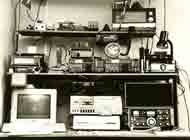
Check basic requirement for your HAM Shack
Its good to check basic requirements for your HAM shack setup before buying any equipment. These requirements are listed below. You can further drilldown deep on each of these points.
- Electrical wiring requirements
- Antennas and feeder space
- Temperature conditions
- Safety and security measures
- Lighting Arrangements
- Ancillary equipment
Designing a ham radio station with some thought can maximize its potential. Since you will spend many hours in your ham radio shack, ensure that it is made as efficient as possible. This will make the time spent at the amateur radio station particularly enjoyable, and you can get the most out of the hobby that way.
Buying Equipment
It is important to have the right equipment when setting up a ham radio shack. Cost, performance, and space must be balanced. With a little planning and investigation, it is normally possible to create an effective radio station within the budget and space available.
A ham radio shack may require several types of equipment depending upon your license class and frequencies allowed in that class.
- HF transceivers: There’s a wide range of HF-related equipment available. The majority of HF transceivers are covered between 1.8 milliseconds to 50 MHz. They are able to cover the lowest portion spectrum of VHF spectrum.
There’s a variety of commercially-made equipment that is the most popular route radio enthusiasts choose to take. Making a fully-specified radio transceiver for HF is an enormous undertaking and sets are available at a reasonable price given the features they have. - Here are 7 Best Mobile Ham Radio for Beginners.
- Here is Beginners guide on Ham radio base station.
- VHF/UHF transceivers: VHF / UHF transceivers are available in handheld and mobile versions. Since most of the operation is mobile and portable, FM works well.
- QRP equipment: QRP, also known as low power operation gives the possibility of building your own equipment. Because it’s low power and typically simpler equipment, it can be constructed and there is an ever-growing group of QRP enthusiasts who are interested in making or operating equipment of their own.
The majority of operations employ Morse code because it significantly simplifies the equipment. there are numerous kits available that offer a simple process to construct the equipment. - Station ancillary equipment: A radio shack can be equipped with a variety of equipment, including antenna switches to manage multiple antennas, Microphones, VSWR meters to check the operation of the antennas, and power supplies to power various rigs. Check our guide on SWR meter for Ham radio: Spark plug antennas: A detailed guide Best Ham Radio microphones
- A Backpack: Ham radio enthusiasts require a reliable and specialized backpack to carry their equipment and protect them from environmental hazards during outing. Here are some handpicked Best Ham Radio Backpacks.
- A Headset: Sometimes you may need to have a hands-free operation or sometimes you are not in clear reception due to poor signal quality. At these times a Headset will be crucial to get voice or morse code reception clearly filtering out external noises. This can prove a blessing in times of emergency. Best Ham Radio Headsets.
- A Ham Desk: You’ll need to setup a small station where you’ll arrange all your equipment and do your daily radioing activity. Ham Radio Desk: Best Ideas & Top picks
Learn Communication Standards
When you’re ready with your ham shack, you’re ready to go on air for your first every communication as a proud HAM. While communicating on air, you must be aware of the following terms and technicalities associated with it.
What are CALL SIGNS
A Call Sign is a unique identifier for a Radio station. A Call Sign not only identifies the radio station but give much more information about the station. The Call Sign is an essential part of radio communication.
With the world-wide radio communication being possible Ham radio stations are able to be heard from hundreds of nations. It was realized after radio began to be utilized to be a necessity to organize radio communications. One of their attempts to achieve this included the assignment of the call sign for each radio station, which included broadcasting amateur stations.
Each callsign has an internationally recognized structure, and this lets stations to identify themselves but also provides information about the nation where that radio station situated.
Each country is assigned prefixes for radio call numbers can be used as well as, by referring to an alphabetical list, one can determine the country and , sometimes, a district in the country in which the station is situated.
So make sure you have registered your all sign as per USA CALL SIGNS block.
What are Q-Codes & Abbreviation
Morse Code is a technique widely used in radio communications.
The Q-codes arose out of need to communicate quickly and more concisely when using Morse code. However now the use of Q-codes is not limited to morse code communications only but also spread into voice communications as well.
To put it in simple words “Q-codes” are set of Alphabets used to convey entire sentences. It has two forms i.e. Questions and Answers. For example the Q-code “QSL?” is in questions form and it is asking the receiving station to confirm the reception of the signals. On the other hand the receiving station will acknowledge reception by using Q-code “OSL” in the answer form by just sending QSL in reply.
List of Q-codes used by HAMs is long. Although Morse codes are no longer a mandatory requirement for HAMs, and its usage is in decline, Q codes are widely used, particularly in ham radio. Therefore, it is likely that these codes can continue to be used for a long time to be.
What is RST Signal reporting
RST is a reporting system used while communicating through radio.
In the event of transmitting or receiving signals when you are communicating or receiving, it is essential to have the ability to provide and receive consistent and useful signals. It can help guide the way to conduct the communication. In order to achieve this, a method known in an RST reports system usually employed.
The name suggests As the name suggests, it is the RST reports system built on three numbers. One stands to indicate Readability (R) One stands for Strength (S) and the third stands for Tone (T). Tone is only used to send Morse codes.
Here is more detailed information about RST system.
What is PHONETIC Alphabet
Radio phonetic Alphabet, also known as the spelling alphabet, is actually a collection of words used to represent the alphabet’s letters. The words of the phonetic alphabet represent the names of the letters that it begins with This is actually known as an acrophony.
One may be wondering that why do we need an entire word to represent an alphabet? Here is the logical reason.
Radio operators must be identified on the air with their call sign, which is alphanumeric which is why it’s not surprising that hams are able to recognize each other only by their sign, not a real address or name. However, identifying sign correctly, or understanding the message may be difficult, particularly when the letters used in signs or messages are similar to one another. For example”M” sounds similar to the letters “M” sounds like”N” or “N”, “B” could sound similar to “D” and so on. This is especially problematic when the communication is weak or is subject to lots of interference, and can result in serious issues when communication is urgent in the nature.
To prevent confusion and simplify communications, amateurs utilize the phonetic alphabet to avoid confusion and simplify communications. This was not a novel concept as phonetic alphabets were used for military personnel of the British army in World War 1, but it was not a standard for all countries. The first international alphabet was created in the International Telecommunications Union (ITU) in 1926. The ITU introduced various modifications to the alphabet over the next 20 years, and an approved version was adopted by the International Civil Aviation Organization (ICAO) in 1956. It was then ratified in the ICU. The phonetic alphabet used currently is now a widely accepted standard.
Make sure you are aware about full list of Phonetic Alphabets.
Maintain your HAM LOGBOOK
Every Amateur radio operator is required to maintain a Logbook of communications. Each time a communication is made, it must be entered in your logbook with every details like date, time, mode of communication, frequency, power, RST etc.
In the digital era, logbook maintenance is facilitated through web-accessed database by ARRL. It is called LoTW (Logbook Of The world). By using LoTW radio amateurs (hams) are able to claim and confirm contacts that they have made with other amateurs, usually to claim credits for operating awards like DXCC.
You can design your own logbook or purchase Ham Radio logbook.
Collect QSL cards
An QSL card specifically made postcard that hams send with each other whenever they meet each other in the very first instance. Hams exchange cards to show their the spirit of friendship and to prove they did make contact via radio.
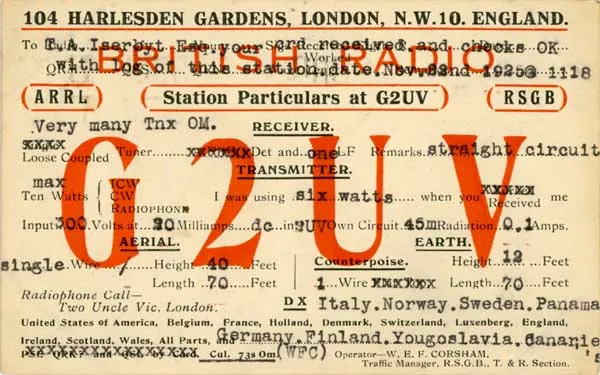
Collecting QSL cards is also a popular hobby amongst HAMs. While certain QSL cards appear plain, they’re the the ham radio operator’s call card, and are often employed to show individual creativity , ranging from a picture of the operator in their station, to unique artwork, pictures of the person’s hometown or the surrounding countryside or the surrounding countryside, etc. Therefore, the collection of QSL cards that feature particularly intriguing designs is now a common in addition to the basic collection of documents printed out of the communications of a ham during his or their radio career.
Just like Logbooks, You can design or purchase your own unique QSL cards.
Go On-Air and make that first call
After you have gone through all steps mentioned in article above; you are now ready to make your first call as a proud HAM or proud Amateur Radio Operator.
Remember, No one gets success at first attempt. You may experience issues like only noisy reception after turning ON, difficulty in tuning your transceiver/antenna to get anything out or receive anything, or just putting out a general message to check anyone is listening and no one responds.
But soon you will learn from experience and get over these things slowly. Take help from nearby HAMs in resolving troubles and get through it.
Best Ham Radios for Jeep & Car for outing adventurers.
Also Read: Baofeng uv-9g unlocking guide.
Also Read: How to unlock Baofeng UV-5R frequencies?
Also Read: HF Band conditions: Reading and interpreting conditions
Also Read: Best Ham Radio Gifting Ideas for Christmas
If you’ve anything to share with us, do not hesitate to Contact Us.
Browse all blog posts:
- Ham Radio SWR Meter || How to Choose & Use 1 in 2025
- Ham Radio for Beginners: All in 1 Ultimate Guide in 2025
- Baofeng BF F8HP Unlock frequencies (UV 5R Unlocking Guide) || Updated 2025
- Ham Radio vs Walkie Talkie: Differences: Updated 2025
- Baofeng uv-9g unlocking: Ultimate How to Guide Updated 2025
- Ham Radio vs GMRS: Comparative guide || Updated 2025
- Best Antenna Analyzer for Ham Radio: USA 2024
- Wide Band vs Narrow Band: Which is better for Ham Radio?
- Ham Radio vs CB vs Walkie Talkie: Choose the Right one USA 2024
- Top 7 Best Ham Radio Gift Ideas – Christmas 2023
- 03 Best GMRS radios for Beginners
- 5 Best Ham Radio Microphones for beginners
- HF Band conditions: A Comprehensive Guide
- Ham radio base station: Best choices to start with
- Spark plug antennas: A simple guide
- Ham Radio Desk: Best Ideas & Top picks 2023
- Ham radio Headsets || Best choices in 2023
- How to renew Ham Radio License: Quick Guide 2024
- Conquer the Trails: 6 Best Jeep Ham Radios || Updated 2025
- Explore 11+ Best Ham Radio Backpacks: USA 2023
- Ham Radio Books: 9 Handpicked Books for You!!
- 7 Best Mobile ham radio for Beginners USA 2023
- HAM radio signal report: Know the RST system || Updated 2025
- Mobile HAM radio antenna || How to choose one? || Updated 2025
- Quick Guide to Ham Radio Antenna Tuner || Updated 2025
- A clear guide to HAM Radio Phonetic alphabets & abbreviations: pdf Download || Updated 2025
- HAM radio Frequencies & Bands in the USA: Popular frequencies with chart || Updated January 2025
- Ham Radio Emergency Frequencies: Must Know During Disasters || Updated 2025
- Ham Radio Antenna Types: A Comprehensive Guide || Updated 2025
- Ham Radio Antenna for Car: Things to consider before choosing
- HAM Radio vs CB: Choosing the right Radio Updated 2025
- HAM Radio Q codes: The easy guide | HAM Radio q codes pdf download | Updated 2025
- How much does a Ham Radio cost in 2025?
- HAM radio General class privileges || Easy Guide USA (Updated 2025)
- HAM radio Technician class privileges || Easy Guide USA (Updated 2025)
- HAM radio Amateur extra class frequencies || Easy Guide USA (Updated 2025)
- How to get a HAM radio license in USA 2023: Easy guide
- HAM radio license exam checklist USA 2025
- HAM radio license exam fees in USA 2024
- HAM radio USA: Everything you want to know as a beginner in 2025 (Updated)

